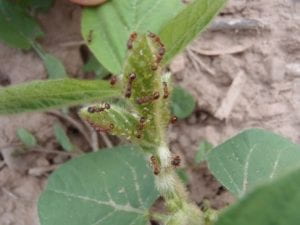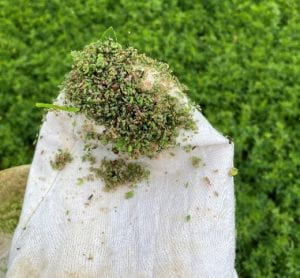Maximum Corn and Soybean Growth Stage for Post-emergence Herbicide Application
I have seen some early planted corn at V6 growth stage and soybeans at V4. We are getting close to or have surpassed the label restrictions on some of our post applied herbicides. Many herbicide labels state a maximum crop height or growth stage (leaf collars or fully expanded trifoliates) when a product can be broadcast. Here is a recent article from Purdue University that includes tables with most of the labeled post-emergence herbicides we use in NY.
When is it Too Late to Plant Soybeans?
We are getting to the very end of planting season. When should we call it quits on soybeans? Cornell recommends June 20th as the last date for soybean planting. If you are going to push the limits and push closer to July, here are some suggestions.
- Plant an early-mid group 2 maturity versus a group 1.
- Push up your plant populations 15 to 20 thousand per acre to compensate for fewer nodes on each plant. We follow a similar schedule for winter wheat in the fall.
- Plant on narrow rows (7 or 15) to maximize sunlight interception and optimize potential yield.
- Start clean and spray weeds earlier than usual to eliminate as much stress as possible.
Soybean Aphid Scouting

Last week I was able to find winged soybean aphids flying from buckthorn to young soybeans in Ontario County. We seem to find first colonies in mid-June. The winged females will lay live young (all females) and will bounce from plant to plant seeding potential new colonies. We are still early enough that those soybeans treated with an insecticide on the seed should control these early aphids. These first SBA infestations are hard to locate so here’s a tip. Look for the ants! The ants search out these aphids to get their waste products, honeydew. If you see ants on a soybean plant, I guarantee the aphids will be there. Here is our CropCam YouTube video on scouting for SBA by looking for the ants. Threshold is 250 aphids per plant but could be lower if on small plants particularly if plants are drought stressed.
Pea Aphid in Alfalfa

Temperatures have been above normal; however, we did experience some cooler conditions which are ideal for pea aphids. After scouting several alfalfa fields, I have found that majority of populations have jumped and we need to continue to monitor and possibly manage. High pea aphid populations can reduce yield. Heavy feeding will result in alfalfa stands turning yellow and wilting. When temperatures are > 90oF reproduction drastically slows down. Pea aphid infested fields attract many natural enemies or predators. In alfalfa, look for lady beetles, minute pirate bugs, green lacewing larvae, damsel bugs, and hoverfly larvae. These insects can be effective at controlling populations.
Purdue University suggests the current control guidelines for managing pea aphids in alfalfa:
Volume/ 20 Sweeps Description of Population
0 to Few – Very Low
Less than ½ cup – Light
½ to 1 cup – Moderate
More than 1 cup – Heavy
If “moderate” to “heavy” infestations are found, then an insecticide may be warranted if:
- there are less than 10% parasitized aphids (gray to brown color)
- low numbers of predators (see above)
- Stem length is less than 14 inches
See the complete fact sheet from Purdue University.


